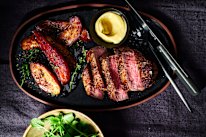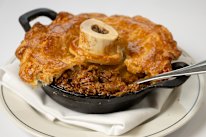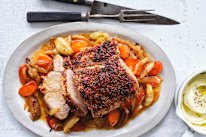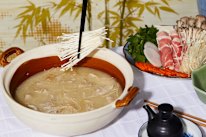Abgoosht (Persian lamb and chickpea stew)
Updated , first published
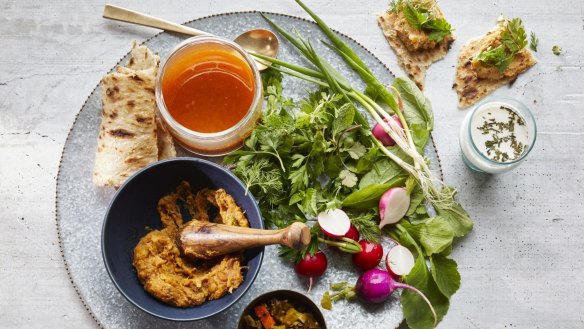
Iran's most beloved and ubiquitous peasant dish, abgoosht (which means "meat water") is made with inexpensive, bony cuts of meat, which take a back seat to the broth and the sheer ceremony involved in serving it all. The dish is simple to prepare, so turn it into an occasion for a gathering and set your table with piles of warm flatbread, pickles and fresh herbs to accompany the broth and meat paste.
Ingredients
1.2kg bone-in lamb shanks
1 tsp ground turmeric
fine sea salt and freshly ground black pepper
½ cup dried chickpeas
½ cup dried white beans, such as cannellini
2 large onions, quartered
¼ cup tomato paste
3 large russet potatoes (about 1 kg)
6 Omani (dried Persian) limes, rinsed and punctured multiple times with a fork
Method
1. The night before you plan to cook, season the lamb with turmeric, one teaspoon salt and half a teaspoon of pepper. Cover and refrigerate. Place chickpeas and beans in a medium bowl; add three cups water and a generous pinch of salt. Refrigerate overnight.
2. To cook: Set a large Dutch oven or soup pot over high heat. Add lamb, onions, tomato paste and eight cups water. Drain chickpeas and beans and add to pot. Bring to a boil, stir to dissolve tomato paste, and cover pot partially with a lid. Reduce heat and simmer stew for two hours.
3. Peel potatoes and cut into 2.5cm pieces. Add potatoes and Omani limes to pot and continue simmering until potatoes and meat are both completely tender, about one hour. Taste and adjust the seasoning of the broth with salt and pepper.
4. Remove limes from pot, and one by one, juice them into the soup through a sieve by pressing down on them with a spoon. (Avoid letting the seeds through the sieve, as they can be bitter.) Taste the broth after juicing each lime and add just enough so that the broth is tangy and bright.
5. Use the sieve to remove the meat, potatoes and beans from the pot and transfer them to a large bowl. Use a fork to pull the meat off the bones. If any of the bones have marrow, use a skewer to remove it and add to the bowl. Use a potato masher to mash meat, beans and potatoes into a soft, uniform paste – this is called goosht kubideh, literally "mashed meat". If the mixture appears dry, add a few spoonfuls of broth and continue to mash until unctuous and smooth. Taste the paste and adjust the seasoning with salt, pepper and Omani lime juice, as needed.
6. To serve, bring broth and goosht kubideh to the table, along with bowls of liteh pickles, salad-e Shirazi, warmed sangak bread and fresh herbs. All of the sides serve as palate cleansers to balance the richness of the dish.
7. Traditionally, the broth is eaten first with sangak bread, which can hold up to the broth without disintegrating. Typically, the bread is torn into bite-size pieces and added to broth to soak for a couple of minutes before digging in. This process is called tilit.
8. Serve the goosht kubideh separately after everyone has had a bowl of broth. Traditionally the meat paste is made into small sandwiches with fresh herbs, and eaten with alternate bites of salad-e Shirazi and liteh (chopped eggplant pickles). Leftover goosht kubideh makes for a great sandwich or baby food, and freezes well for up to two weeks.
This is one of Samin Nosrat's 10 essential Persian recipes.
Samin Nosrat is the author of Salt, Fat, Acid, Heat and star of the related Netflix show. This recipe originally appeared in The New York Times.
Appears in these collections
The best recipes from Australia's leading chefs straight to your inbox.
Sign upFrom our partners
Similar Recipes
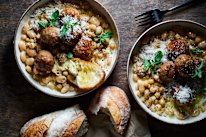
Raid the pantry for these creamy braised beans with lamb meatballs
- 30 mins - 1 hr
- Jessica Brook
Original URL: https://www.watoday.com.au/goodfood/recipes/abgoosht-persian-lamb-and-chickpea-stew-20190617-h1fg9k.html
